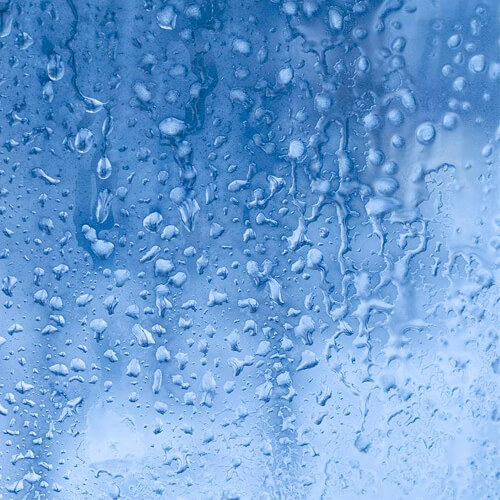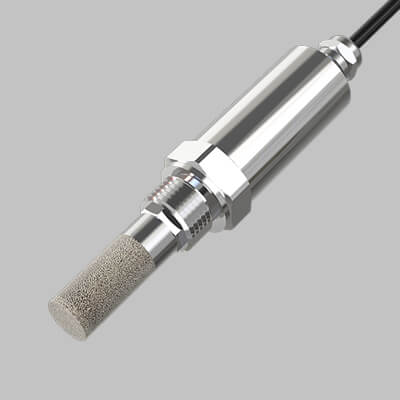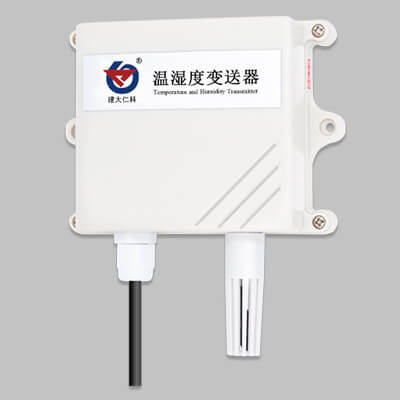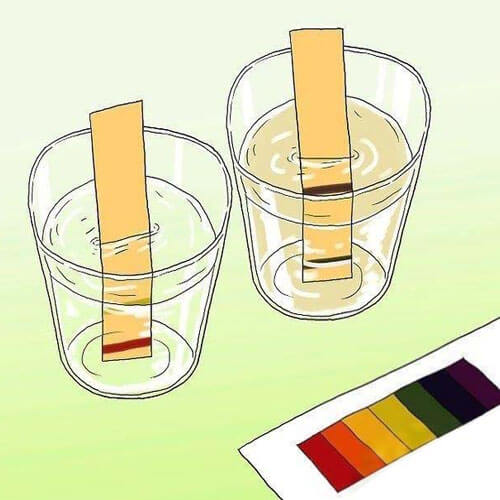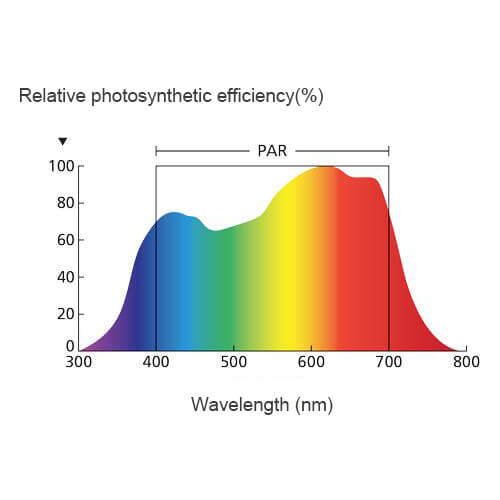The dew point depends on how much water vapor is present in the air. If the air is very dry with few water molecules, the dew point is low, and surfaces must be much colder than the air for condensation to occur. If the air is very humid with a high concentration of water molecules, the dew point is high, and condensation can occur on surfaces only slightly cooler than the air.
What is dew point?
In meteorology, dew point refers to the temperature point at which the gaseous water in the air is just saturated and condenses into liquid water under a fixed air pressure. At this temperature, condensed liquid water becomes fog if it floats in the air, and becomes dew if it sticks to a solid surface.
We often see condensation in our daily life. For example, in autumn and winter, when the temperature drops, part of the water vapor in the air liquefies, forming dew on the grass and dew or frost on the glass windows. This happens because the decrease in temperature causes the originally unsaturated water vapor in the air to gradually become saturated. The saturated water vapor forms dew in an environment above 0 degrees, and frost forms in an environment below 0 degrees. Dew point is an important meteorological parameter that can predict dew, frost, fog, nighttime low temperatures, and even the formation of rainfall and tornadoes. Provide data support on air humidity for weather enthusiasts.

What will affect it?
Dew point vs humidity
Humidity is an important factor affecting the dew point and includes both absolute humidity and relative humidity.
Absolute humidity refers to the mass of water vapor contained in every cubic meter of humid air, that is, the density of water vapor, in g/m³.
Relative humidity, on the other hand, is the percentage of water vapor pressure in the air compared to the saturation water vapor pressure at the same temperature. It is commonly expressed as a percentage.
The dew point depends on the relative humidity. In an environment with constant air pressure, the higher the relative humidity, the more accurate the dew point measurement. Just like in a fixed space, the more people enter, the smaller the space for movement becomes. In the same way, the lower the relative humidity, the less water vapor in the air, and the dew point value is much higher than the current ambient temperature. When the relative humidity is higher, or even reaches 100%, the water vapor is completely saturated, and the dew point value is equal to the ambient temperature.
| Temperature (°C) | Relative Humidity (%) | Dew Point Temperature (°C) |
|---|---|---|
| 30 | 10 | 1.0 |
| 30 | 20 | 5.4 |
| 30 | 30 | 9.1 |
| 30 | 40 | 12.3 |
| 30 | 50 | 15.0 |
| 30 | 60 | 17.3 |
| 30 | 70 | 19.4 |
| 30 | 80 | 21.3 |
| 30 | 90 | 23.1 |
| 25 | 10 | -3.3 |
| 25 | 20 | 1.2 |
| 25 | 30 | 5.0 |
| 25 | 40 | 8.3 |
| 25 | 50 | 11.0 |
| 25 | 60 | 13.3 |
| 25 | 70 | 15.4 |
| 25 | 80 | 17.3 |
| 25 | 90 | 19.1 |
Dew point is originally a temperature value, but it is used to represent humidity because when the air is already saturated with moisture, the air temperature is the same as the dew point temperature. When the air is not saturated, the air temperature is always higher than the dew point temperature. Therefore, the difference between the air temperature and the dew point temperature can indicate the degree of moisture in the air relative to saturation. At 100% relative humidity, the surrounding environment’s temperature is the same as the dew point temperature. The smaller the dew point temperature is compared to the environmental temperature, the less likely condensation is to occur, indicating drier air.
General aviation pilots use this data to calculate the likelihood of carburetor icing and fog formation and estimate the height of cumuliform cloud bases.
Increasing atmospheric pressure will raise the dew point. This means that if pressure increases, you must reduce the mass of water vapor per unit volume of air to prevent condensation. For example, consider New York City (elevation 33 feet or 10 meters) and Denver (elevation 5,280 feet or 1,610 meters). Because Denver’s elevation is higher than New York’s, its atmospheric pressure is generally lower. This means that if the dew point and temperature are the same in both cities, the air in Denver contains more water vapor.
Video from @WeLoveWeatherTV
Dew point vs temperature
In addition to humidity, temperature is the second influencing factor. When the pressure remains constant, a high-temperature environment can hold more water vapor than a low-temperature environment. This is because rising temperature increases the kinetic energy of water molecules, and liquid water originally in a low-temperature environment will evaporate into the air as the temperature rises. Therefore, if the relative humidity remains constant, the dew point will be higher in high-temperature environments than in low-temperature environments.
In winter, when we move from the cold outdoors to a warm indoor environment while wearing glasses, you may notice that a white fog quickly forms on the lenses. This occurs because the temperature rises, but the water vapor pressure also increases. When the surface temperature of the glasses is lower than the dew point temperature of the air, water vapor condenses on the cooler surface of the glasses, forming small water droplets, much like dew. Once the air is saturated, any surface with a temperature equal to or lower than the air temperature will undergo condensation.
What is a comfortable dew point?
In hot summer weather, the human body cools down through the evaporation of sweat. The faster sweat evaporates, the quicker the body temperature decreases. The rate of sweat evaporation is influenced by the moisture content in the environment and the capacity of the environment to hold water vapor. If the air is already saturated with moisture (humid), sweat won’t evaporate efficiently. In such conditions, the body’s temperature regulation relies on sweating, even if the rate of sweating exceeds the rate of evaporation. Therefore, in humid summers, even with normal sweating, people can still feel uncomfortably warm.
When the air around the body is heated by body heat, it rises and is replaced by other air. Moving air away from the body, either naturally through a breeze or with a fan, promotes faster sweat evaporation, effectively cooling the body. The more sweat that doesn’t evaporate, the greater the discomfort.
Therefore, it will affect people’s comfort, and both high and low dew points will cause discomfort. Generally speaking, a dew point value between 50-60°F is suitable for people. When the value is too low, people will feel dry skin and prone to nosebleeds. At this time, a humidifier is needed to improve the environment. When the value is too high and exceeds 61°F, people will feel that their skin is moist and sticky and have difficulty breathing. At this time, ventilation equipment is needed to reduce the environmental dew point.
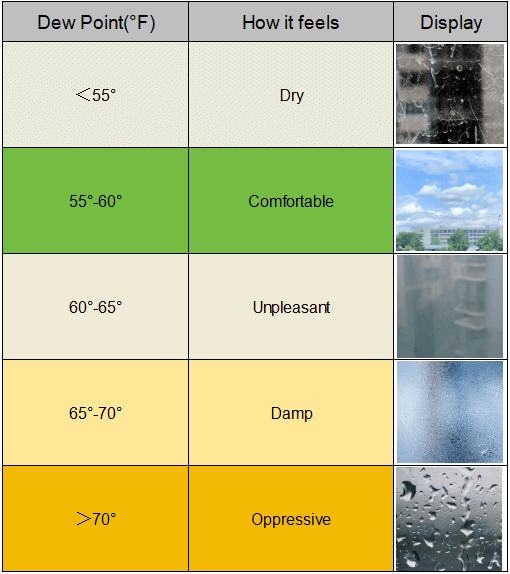
Why is dew point important?
It is a fundamental indicator used to measure the state of the atmosphere. Meteorologists calculate the it by measuring and computing the moisture content and temperature of the air. It holds significant importance in weather forecasting and warnings of meteorological disasters. When the dew point in the air approaches or falls below 0 degrees Celsius, it can lead to icy weather conditions, adversely affecting transportation, agriculture, aviation, and other sectors. Therefore, timely predictions are crucial for disaster prevention and mitigation.
In industry, it is a critical figure. For example, in processes such as drying, refrigeration, and gas treatment, inaccurate dew point control can lead to corrosion and damage to components, which can lead to mechanical failure. The higher the ambient dew point, the shorter the time that objects can store charge, and the conductivity of the air increases. Therefore, some clean rooms in precision industries (such as precision semiconductor industry) and drying rooms in lithium battery production have extremely high requirements for dew point detection. In the agricultural field, crop growth conditions are analyzed by monitoring dew point and water is replenished in time.
How to measure dew point?
Monitoring the dew point value can analyze the content of water molecules in the air, thereby conducting evaluation and analysis for environmental protection, building safety, meteorological monitoring and other projects. Here are four methods for measuring dew point:
Using Calculation Formulas
Calculate the dew point value through this formula. Listed below is the common Magnus-Tetens formula, which is one of the methods for calculating dew point.
Td = (237.3 * (ln(RH/100) + (17.27 * Tc) / (237.3 + Tc))) / (17.27 - ln(RH/100) - (17.27 * Tc) / (237.3 + Tc))
Td – dew point temperature (degrees Celsius)
RH – relative humidity (percent)
Tc – current temperature (Celsius)
This formula seems simple, but in actual environments, relative humidity is difficult to measure. This is a big difficulty. So it is not simple to operate.
Using Sensors
Dew point sensor is a device specially developed for measuring dew point. Obtaining the dew point value directly through sensor monitoring is the simplest and most practical method. However, the quality of sensors on the market varies from good to bad, and you need to spend a lot of time selecting them. Renke is a manufacturer specializing in the development and production of weather sensors. With 17 years of experience, it is a brand worthy of your trust.
Referencing Open Source Data
Some weather bureaus or environmental organizations can provide some free meteorological data, which will include dew point data. You can search and use this data. For example, the U.S. Weather Bureau provides free weather data. The good news is that you can get the data for free, the bad news is that the data may not meet your requirements. For example: you want to know the dew point value of your farm, but the data provider can only provide you with data for a certain state.
Self-Observation
If you want more accurate data, you can purchase pressure sensors, temperature sensors, humidity sensors, etc. to build a complete weather station system and calculate the dew point value through measured real-time weather data.

